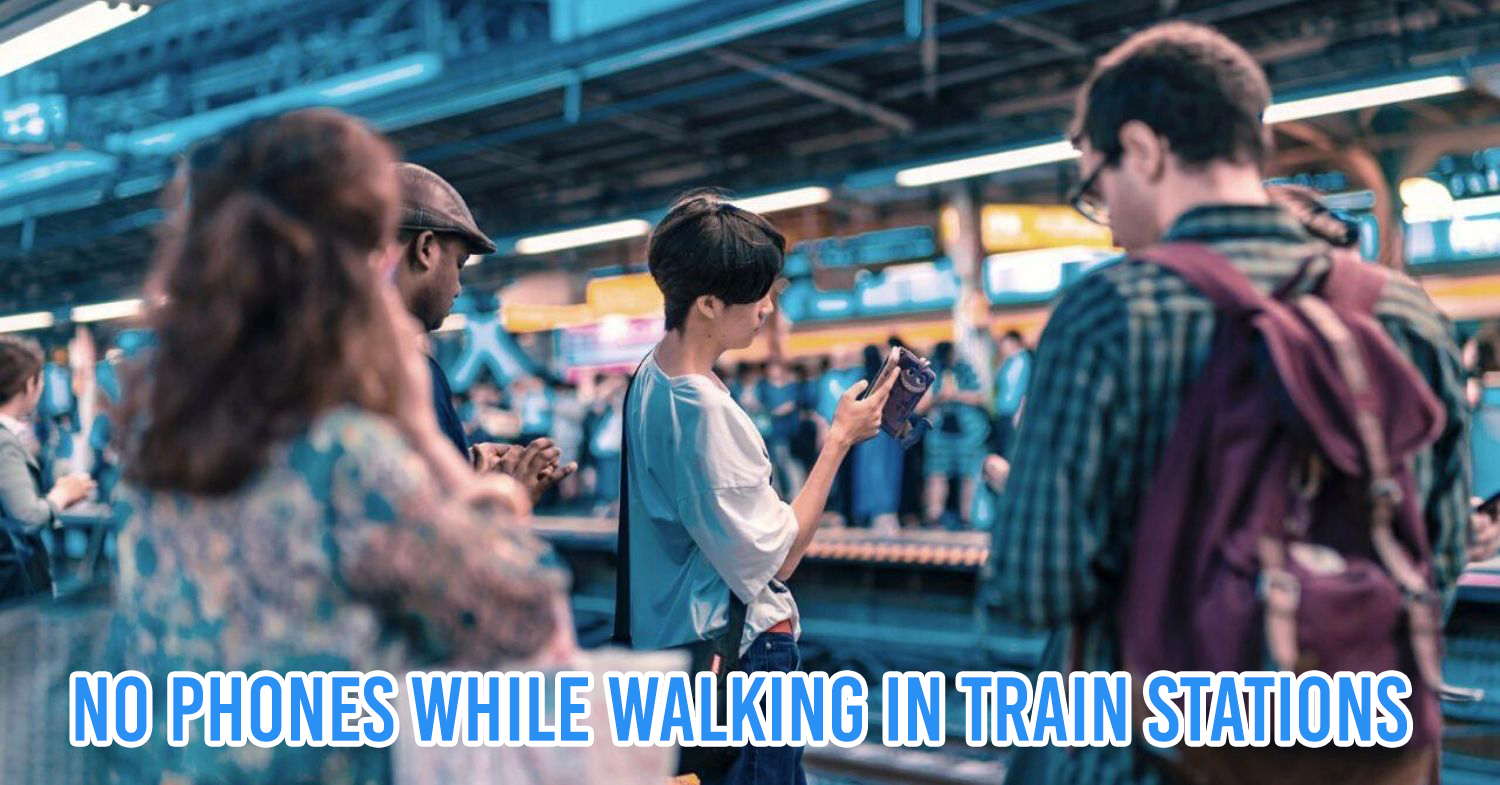Japanese train etiquette
Every country has that one ironclad rule everyone follows when taking the train – the British always let people alight before getting on due to small carriage doors, Singaporeans have zero tolerance for smelly food like durians, and Parisians are expected to give up their folding seats if the train is crowded with commuters. But Japanese train etiquette is on another level entirely.
The Japanese take their train etiquette so seriously that it’s hard to pinpoint just one out of the many rules they follow. No sweat – we’ve sussed out 14 most important train etiquette so you don’t become that oblivious gaikokujin (foreigner) every local shuns.
– Basic train etiquette –
1. Giving up your seats to the elderly may be disrespectful
Don’t be surprised if an obasan (grandmother) or ojisan (grandfather) gives you an odd look when you offer them your seat out of goodwill. The Japanese elderly pride themselves on being able-bodied and may find your offer patronising, or even ageist.
That said, you can always choose to walk away before your conscience eats at you. Leaving your seat vacant without a word gives them the freedom to take the seat without feeling slighted.
2. For men: keep your hands up
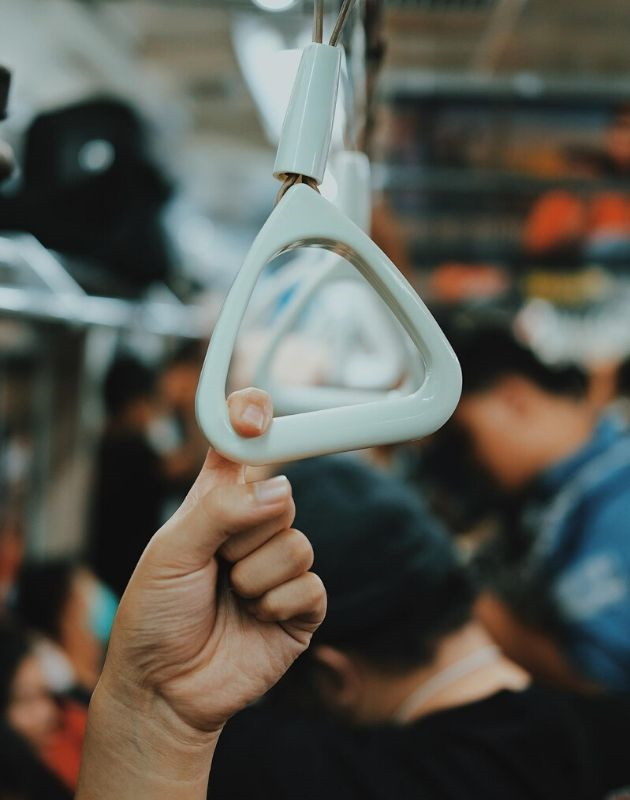
Image credit: Arif Riyanto
It’s always good to be on the lookout since tales of chikan (public molestation) often make headlines in Japan. While the Tokyo Metro has women-only cars so that women and young children can commute safely, this is only available during the rush hours from 7AM to 9AM.
As such, we advise male travellers to keep their hands up – where it’s in the clear – in order to prevent any misunderstandings.
3. Do not apply makeup in trains
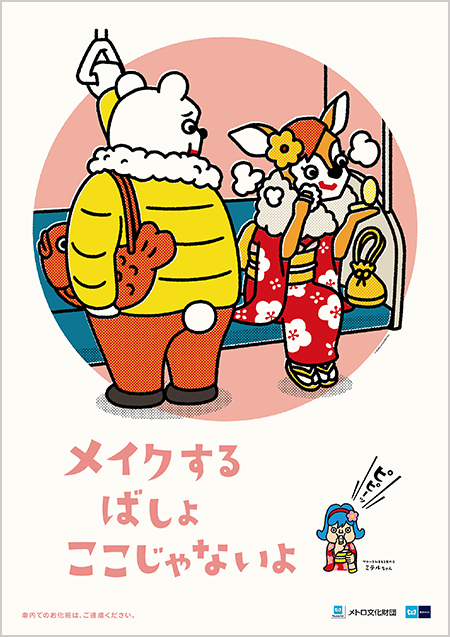
2014 Tokyo subway’s manner poster
Image credit: tokyometro.jp
Putting on makeup in trains is frowned upon in Japan – especially if you’re attempting a beat worthy of RuPaul’s Drag Race. Yes, it can be a major timesaver, especially if you’re running late. However, it is impolite – no one wants to breathe in a cloud of setting powder on their commute during the rush hour.
The rule applies even if you’re just touching up on your concealer – in short, do not apply makeup when you’re on a train.
4. Avoid emptying your shopping bags
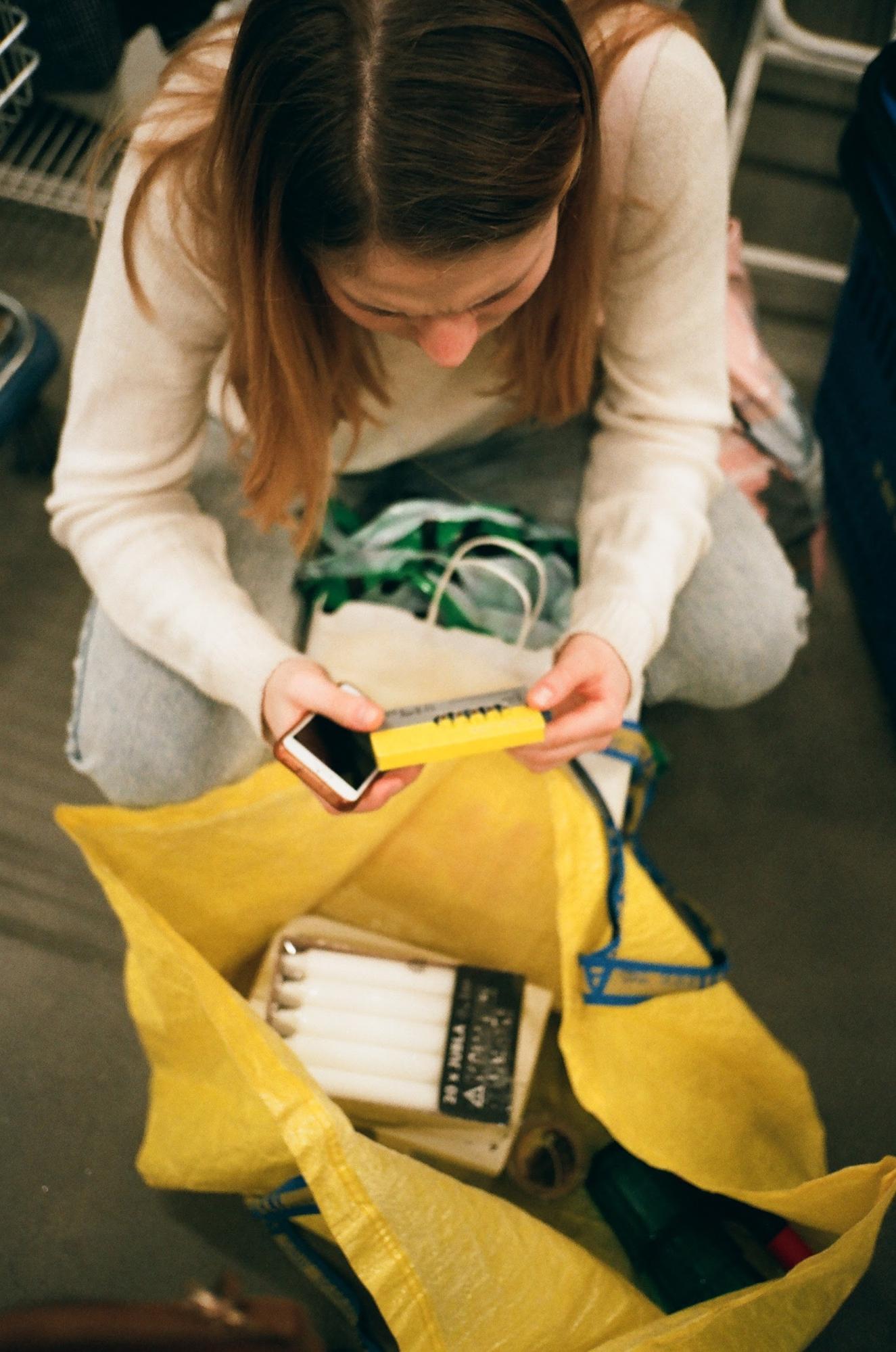
Image credit: Daria Sannikova
Emptying or unpacking your shopping loot is considered a private affair and is only done when you’re at home. Even if you’re just doing a last-minute run-through of your purchases, make sure to do that before you enter the train or save your excitement till you’re home.
5. No eating or drinking in trains
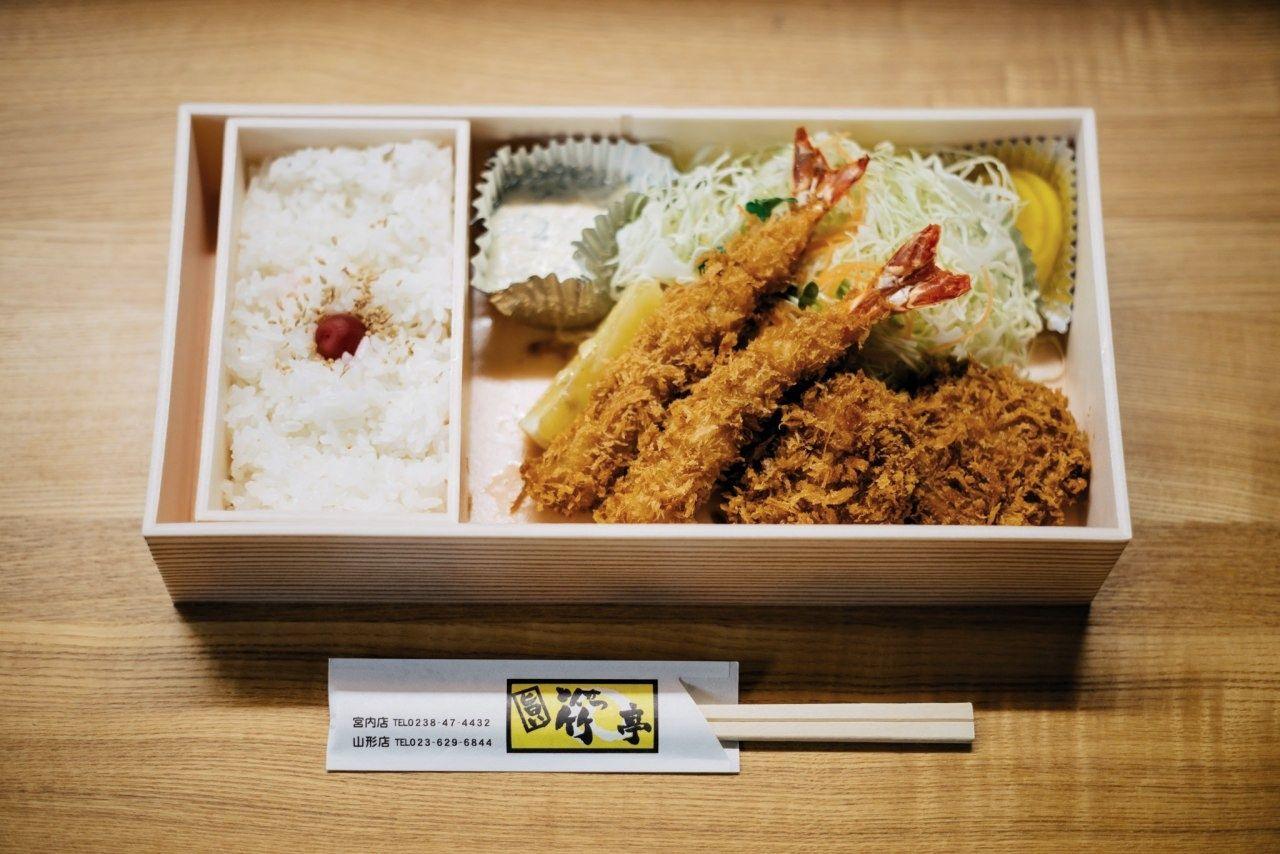
Image adapted from: Quang Anh Ha Nguyen
Eating and drinking on the trains are frowned upon. While you are allowed to bring food and drinks onto the train, the act of consuming it isn’t allowed. The only exception is on high-speed trains like the Shinkansen.
6. Avoid manspreading or taking too much space
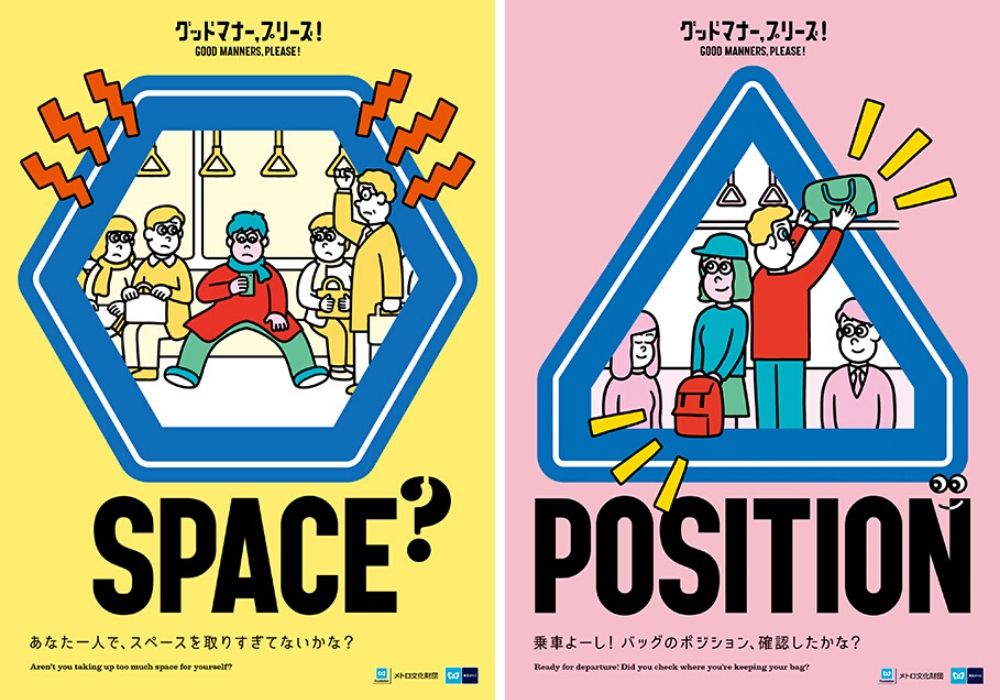
2019 Tokyo subway’s manner poster
Image credit: tokyometro.jp
In a cabin packed with commuters, having enough space during the rush hour is a luxury.
So, if you’re boarding a packed train while carrying a huge backpack, be considerate and place it on the floor between your legs or on overhead racks.
It is also important to pay attention to the way you sit. Never manspread – space is scarce enough as it is.
Tip: You can engage in Takuhaibin (宅配便) services if you have too much luggage with you. You can get your baggage delivered from the airport straight to the doorstep of your accommodation with minimal fuss.
7. Don’t lean against the poles in the train
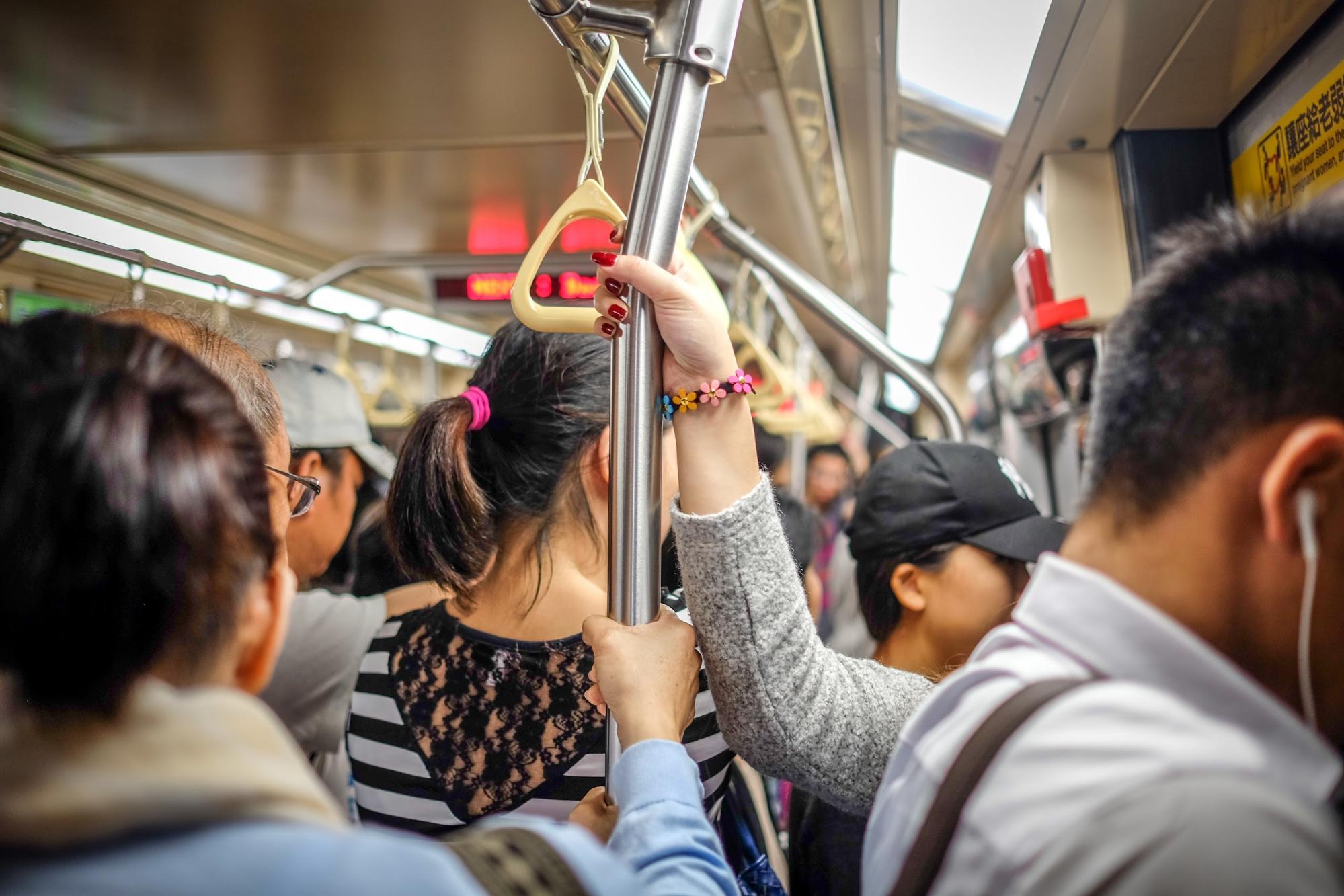
Image credit: diGital Sennin
In countries like Singapore, it’s common to see passengers leaning against the poles in trains or even hugging it like a koala bear. But in a considerate country like Japan, that is simply not a done thing.
Keep your hands on the poles for safety purposes and nothing else, unless you’re willing to get tsk-ed by the locals.
8. Step away if you can’t get through the ticketing gate
Heading out, you walk towards a train station and find the gantry. Bonus points for efficiency if you’ve already taken out your transportation card – except that you’re now stuck behind the gates. Troops of Japanese commuters are now in a bottleneck behind you, wondering why there’s a line.
Before you start to panic, take a big breath and step away first. You can always ask for help from a train attendant or look for the nearest ticketing machine if your card is low in value.
Tip: The SuicaEng app allows you to check the e-balance of your transportation card as and when you like.
– Train rules on electronic gadgets –
9. Always turn your phone on silent mode
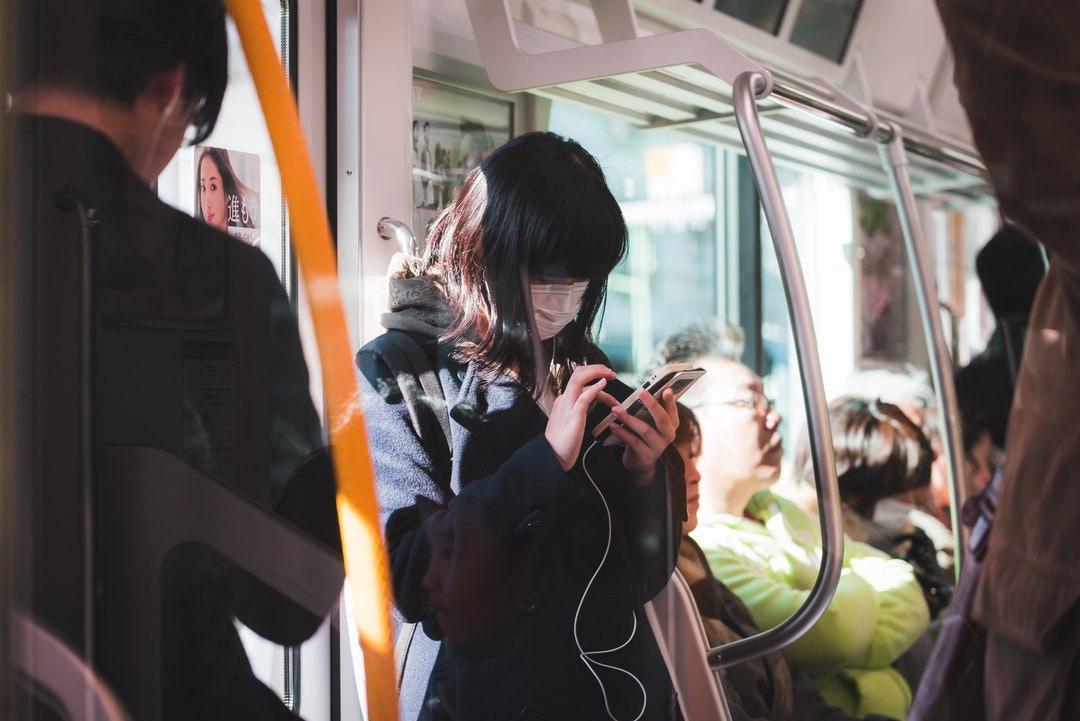
Image credit: 🔮🌊💜✨
You can always rely on “sumimasen” (sorry/excuse me) if you’re holding up the line at the gantry. However, forgetting to turn your phone on silent mode – also known as “manner mode” – will attract stares or looks of disapproval from nearby commuters. The Japanese follow this rule strictly to avoid disturbing other passengers.
In fact, AsiaOne even reported that a Japanese man was attacked because of loud music coming from his headphones. We’re not taking our chances and neither should you.
10. Keep your phone away if you’re near the silver seats
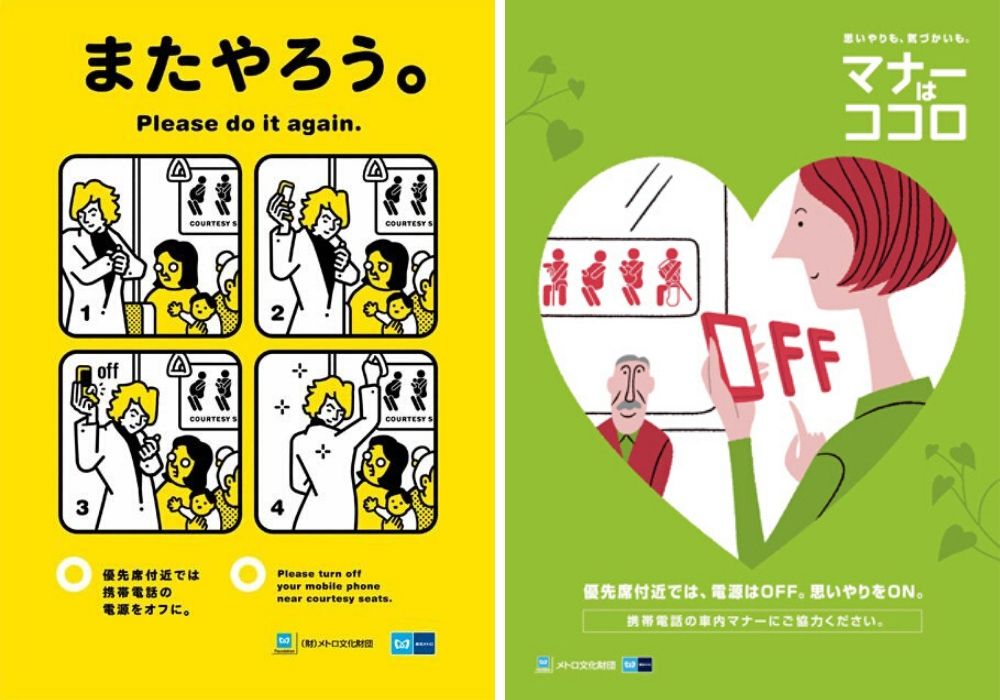
2010 and 2013 Tokyo subway’s manner posters
Image credit: tokyometro.jp
2G mobile phones were banned on trains as it can interfere with pacemakers, causing accidents and even fatalities. Fast forward to the 5G era – while modern phones no longer pose the same threat, it’s always safer to keep it switched off if you’re near the silver seats – priority seats for the elderly, pregnant women, and people with disabilities or injuries.
But if you really can’t bear to part from your phone, just move away from these priority seats.
11. Don’t use your phone while walking in train stations
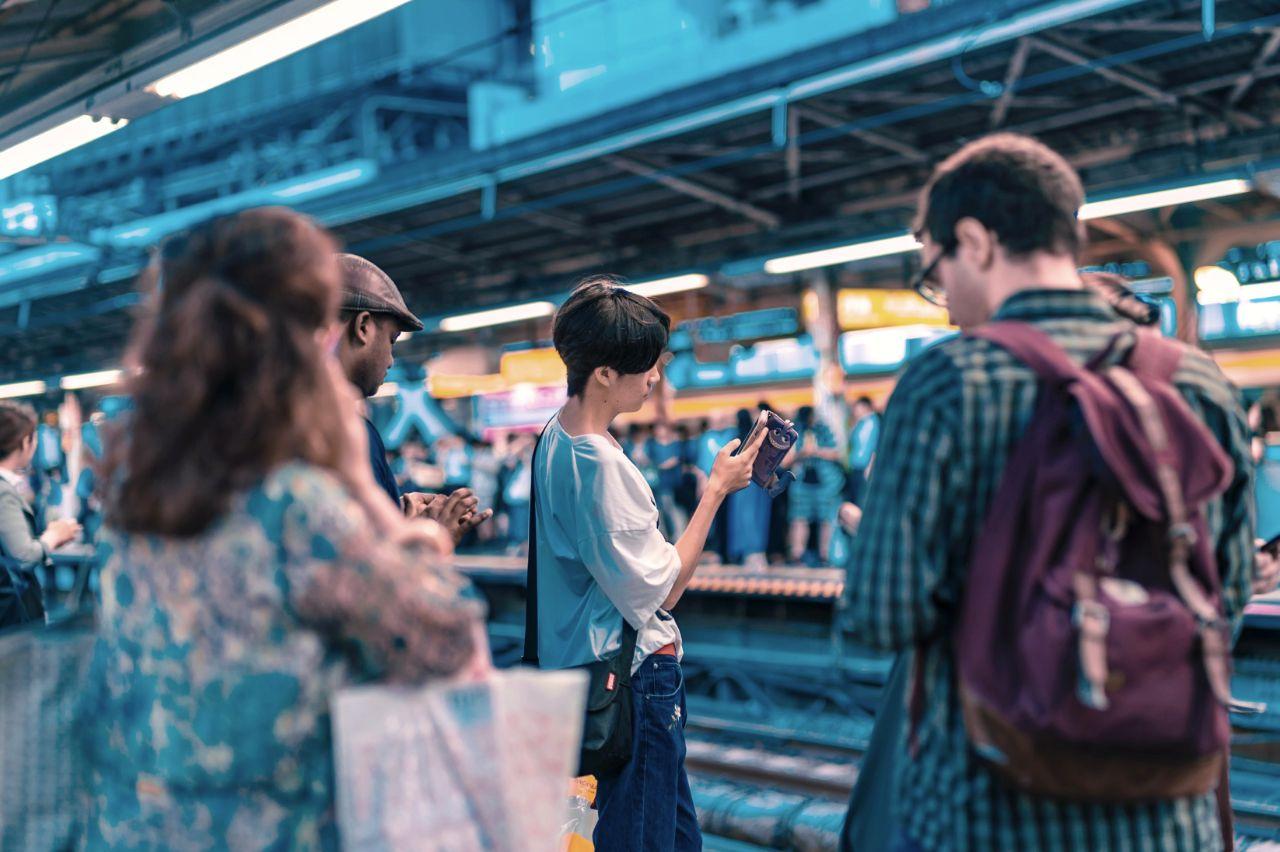
Image adapted from: Jezael Melgoza
With all the buzz regarding smartphone usage in trains, here’s a #firstworldproblem that most of us are guilty of – knocking into someone while using our phones.
The Japanese have little patience with smartphone addicts, especially during peak hours. Commuters will be rushing at breakneck speed to get to work so unless you have a third eye, keep your phones away or you might get trampled.
Tip: It is safe to use your phones while waiting for or riding a train. As always, remember rule #10 and turn on “manner mode” at all times.
– Travelling with a child –
12. Designated seats for strollers
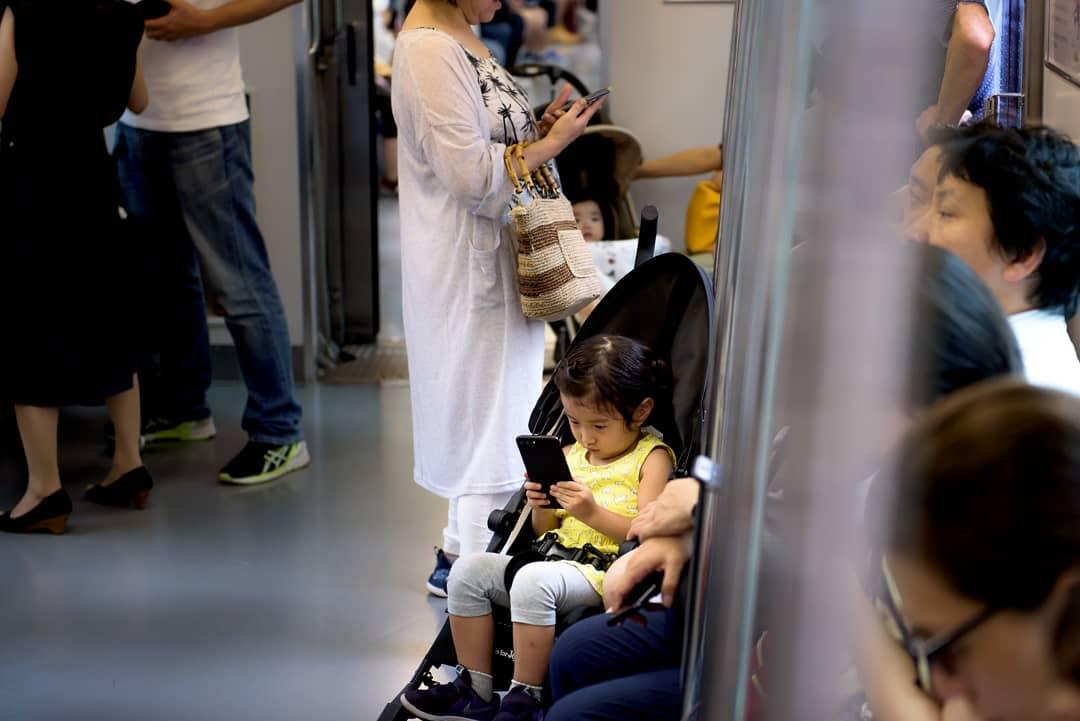
Image credit: @peterbminnig
Strollers are a godsend when it comes to travelling with kids – we’re sure nobody wants to carry a toddler around for the whole day without rest. Thankfully, most trains in Japan have designated seats for strollers at the tail-end of each train. You can also park your stroller at a corner to avoid taking too much space.
During peak hours, however, this privilege is nullified, which brings us to the next point.
13. Avoid taking the train with a stroller during the morning rush hours
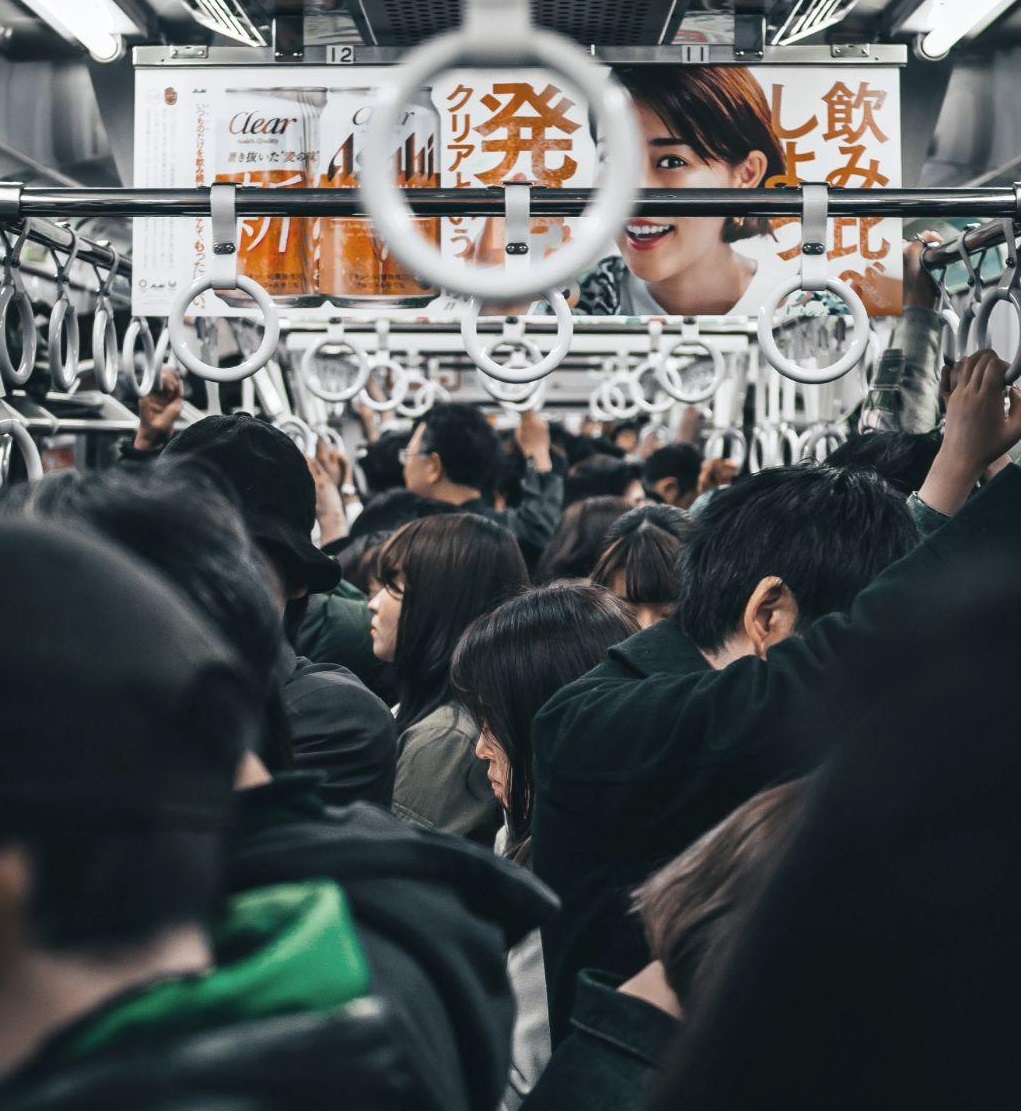
Image adapted from: Life of Wu
Peak hours spell madness for Japanese commuters. Human traffic can be so heavy that train attendants have to push people into the trains to even get them onboard. Squeezing in a stroller will not only take up too much space, but you might also even find it nearly impossible to get your stroller inside the train. Do yourself a favour and travel outside of peak hours, or consider taking a taxi.
14. Remove your child’s shoe before seating
Most toddlers are cute to look at until they start stepping and dirtying the seats with shoe stains.
If your kid is hyperactive and prone to standing on train seats, make sure to remove their shoes and keep a watchful eye on em’. Hyperactive kids are tolerable but less so for parents who turn a blind eye to the mess their kids made.
Japan’s unspoken train rules
It’s easy to slip up and find yourself in an awkward situation with so many rules and etiquette to look out for. When that happens, you can always fall back on the 3 ‘S ‘- silence, space, and social awareness. Make sure to practice good manners and avoid drawing attention to yourself so you won’t live up to the rep of a clueless gaikokujin.
Check out these articles on your next trip to Japan:
